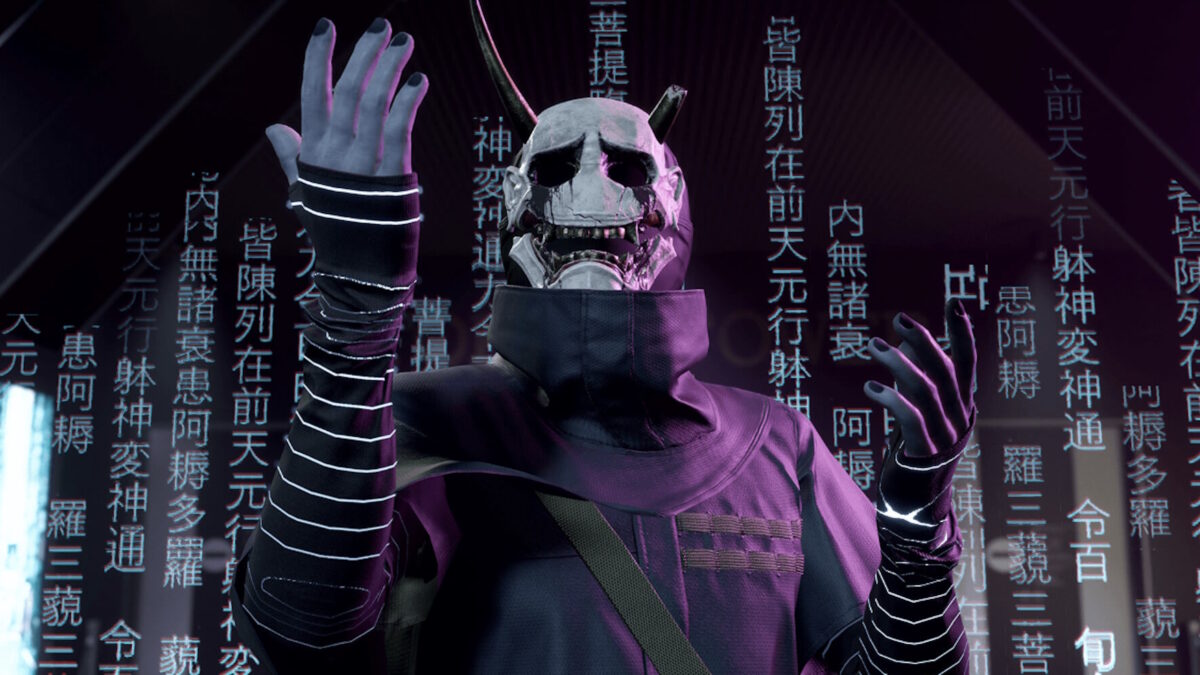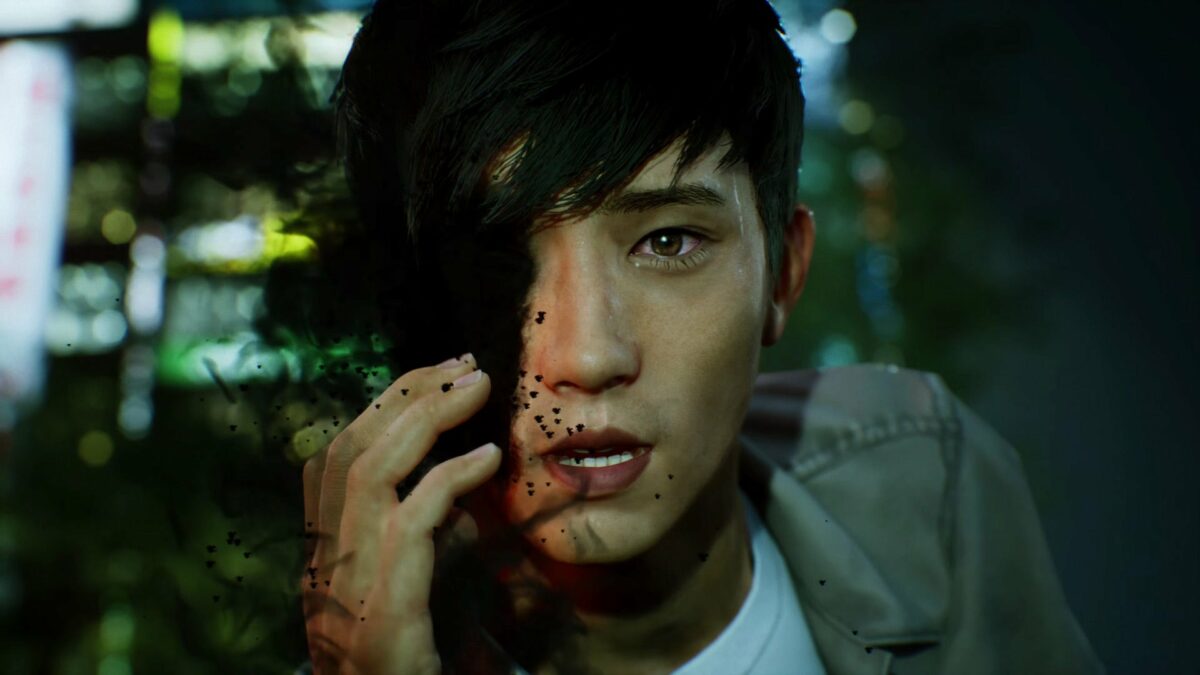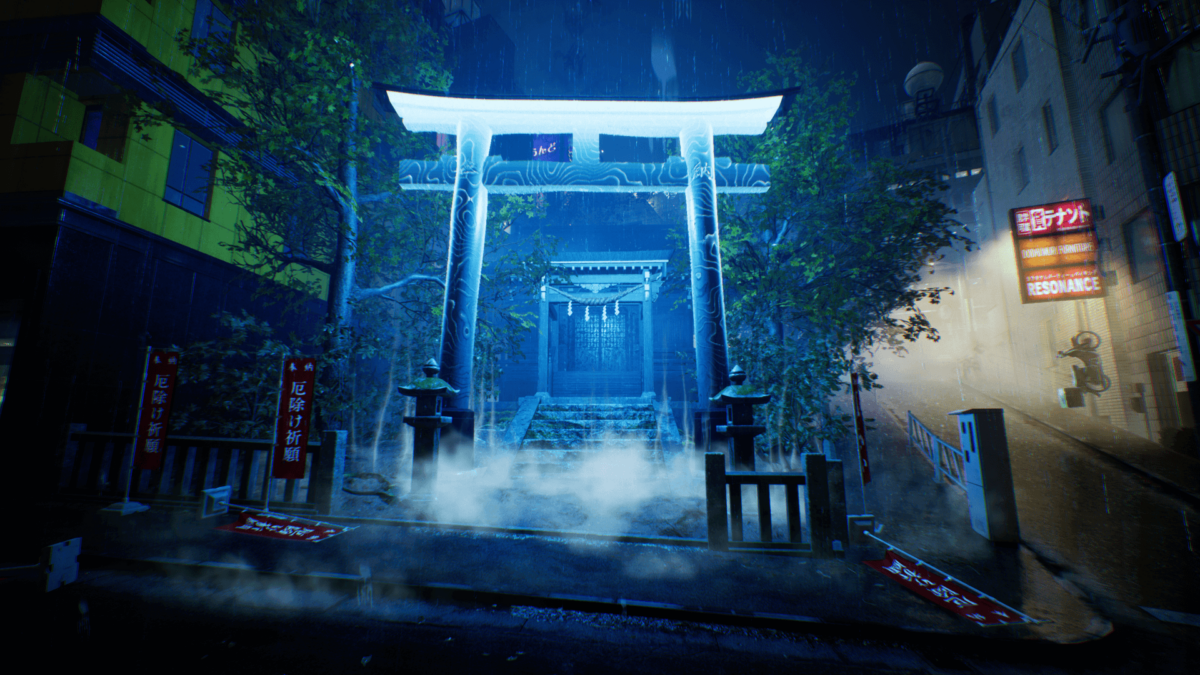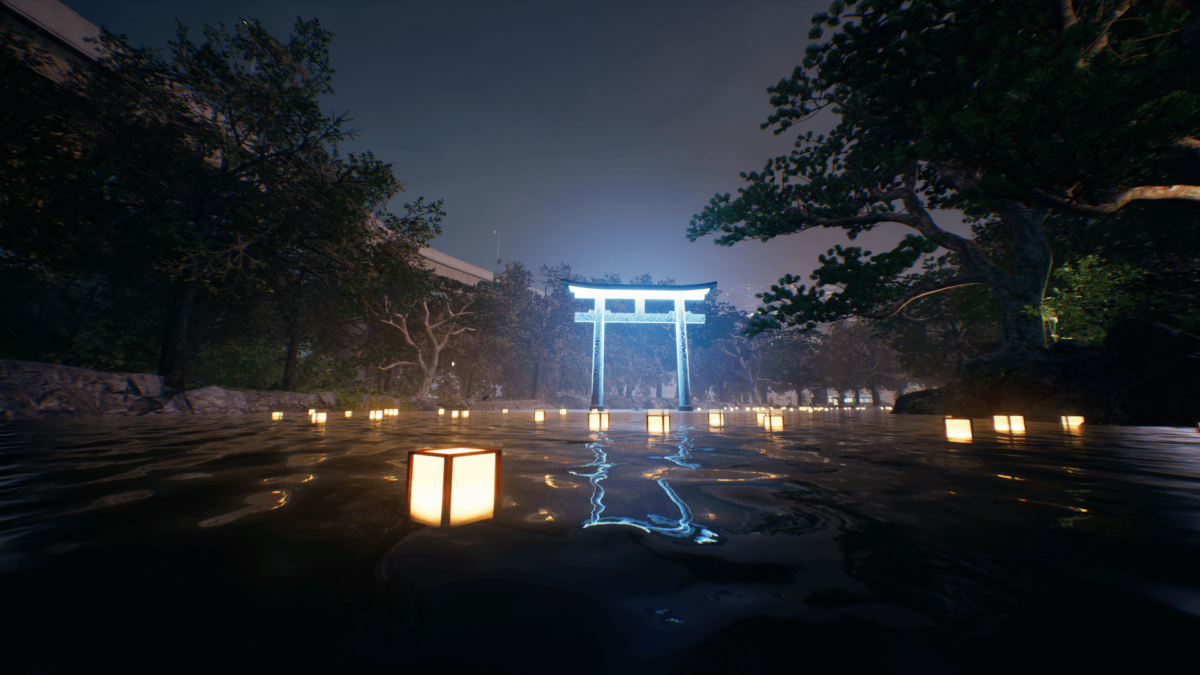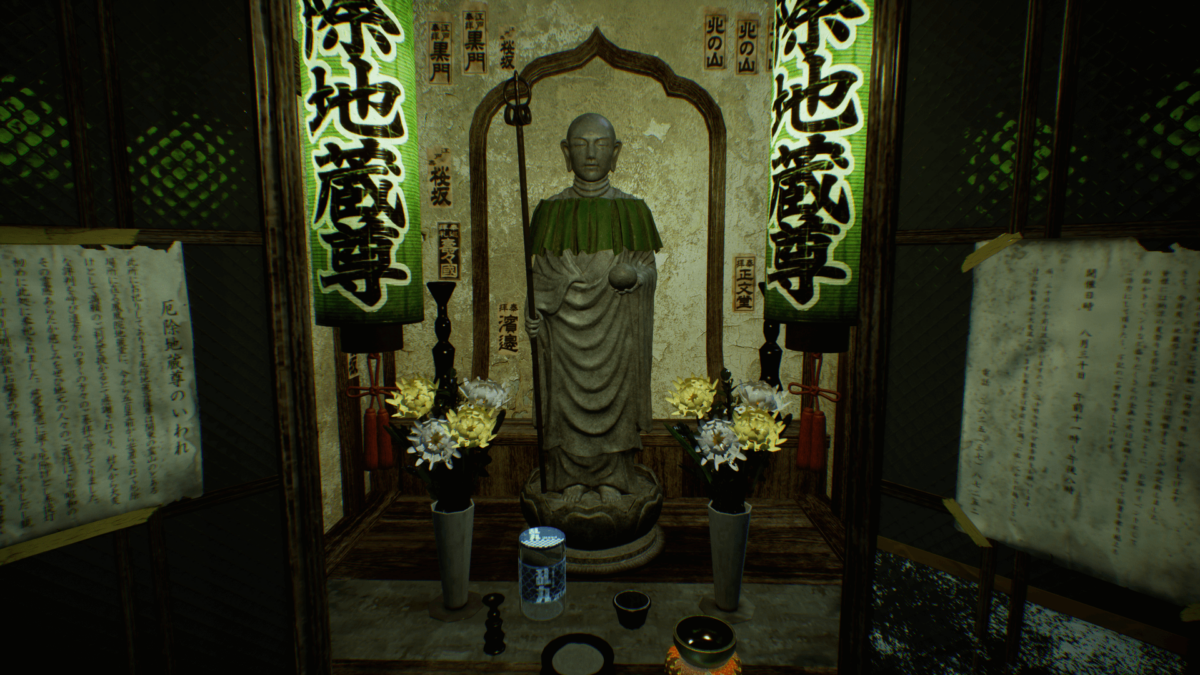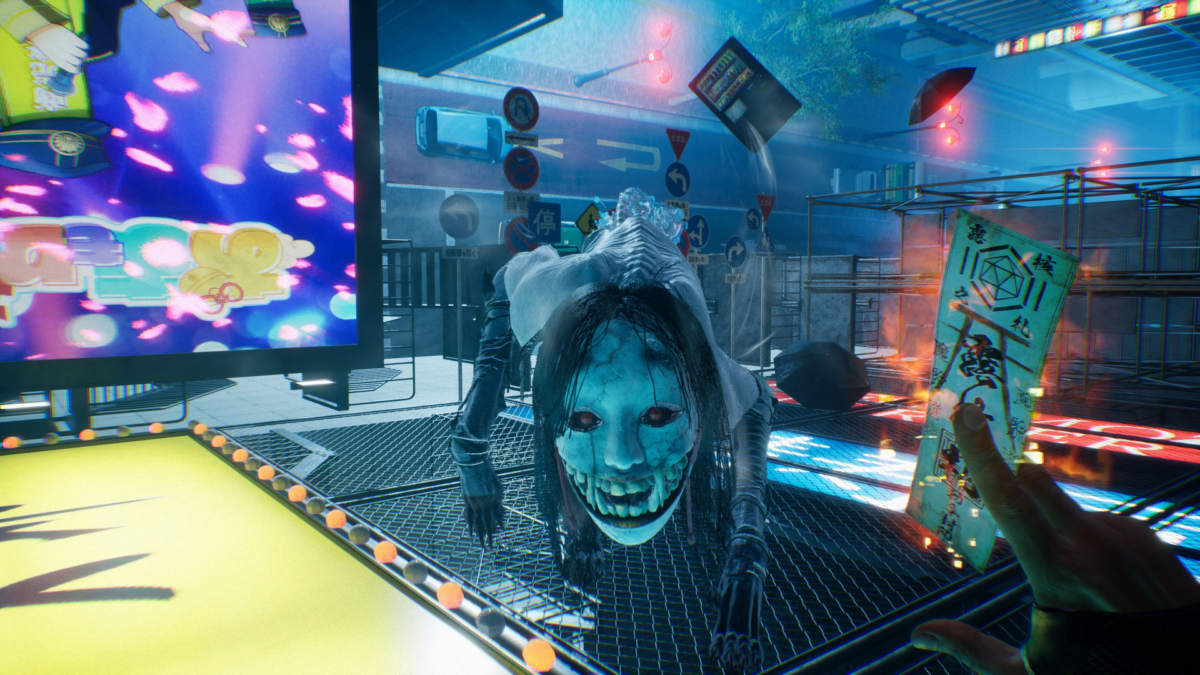If you’re ever driving alone at night, be careful you don’t have an encounter with Kôsoku bâba, a Japanese urban legend that literally translates to “high-speed granny”.
Picture the scene: you’re cruising along, listening to the radio as road markings and street lights blur by in your periphery. Suddenly, the radio starts to crackle from interference. It’s probably because you just entered a tunnel, you tell yourself. Then you look to your left and it’s there, a face staring in at you. A face belonging to a frail old woman who’s sprinting alongside your car and peering into your soul – Kôsoku bâba.
[mm-video type=video id=01fy49t2z46g03k3w17n playlist_id=none player_id=none image=https://images2.minutemediacdn.com/image/upload/video/thumbnail/mmplus/01fy49t2z46g03k3w17n/01fy49t2z46g03k3w17n-14438eaf94912606e05b556a50ff9e7c.jpg]
I would suggest you take public transport to avoid this, but you might instead fall afoul of the midnight train, going anywhere. Step onto a train alone at night in Japan and urban legends say you might be whisked away to another world, never to be seen again outside of the labels on a milk bottle.
“There are other cool ones that are based in schools,” Ghostwire: Tokyo game director Kenji Kimura tells GLHF. “After everybody has gone home after dark – there could be a bathroom that nobody uses. The last stall in that bathroom, the toilet there could be haunted. There’s a famous story called ‘The Hanako of the Toilet’, which is based on that kind of setting. There are probably similar urban legends to that in the West, and those are always pretty frightening.”

Tango Gameworks is a studio that’s best known for scary games. Founded by Shinji Mikami – one of the minds behind Resident Evil – the studio’s previous games are both what you’d expect. The Evil Within and its sequel were essentially Resident Evil in all but name (and almost in name, when you think about it), but Ghostwire: Tokyo is new territory for Tango. It might have more spirits than a dive bar, but this is an action-adventure title through and through.
“The combat needed to feel good,” Kenji Kimura explains. “It’s not a horror game. The combat, we wanted to make sure that it felt good as you progress into the story and move around in the city.”
After playing through the first two chapters, I can confirm the studio succeeded. Using hand gestures inspired by kuji-kiri – a ninjitsu-style martial art where the hands represent Yin and Yang – you fire off elemental spells like finger gun fireworks.

Flicks of the wrist send out volleys of wind-powered slashes, cupping the hands together conjures a fireball, and fanning them out creates an arc of water. It’s a cool way to have a pistol, a rocket launcher, and a shotgun without actually using firearms. Flipping between the gestures feels slick, each transition accompanied by its own hand gesture, and every impact is sold by blasting open holes in your enemies or the dust-like particles spraying from them like the sweat from a boxer’s cheek. Elsewhere, you have paper signs that act as a stand-in for various grenade types, and then there’s a bow, which acts as, y’know, a bow.
When you’ve weakened a spirit, its core becomes exposed and you’re free to rip it out by tying it up with cords of energy and yanking it from their horrible, weird bodies, turning them into a shower of dust and crackling magical energy. Stun multiple enemies at once and you can tear multiple cores out at the same time. It doesn’t come across in trailers, but it feels ridiculously cool when you’re the one doing the tearing. I’d go as far as to say it’s the best showcase of PS5’s DualSense controller outside of Astro’s Playroom.

“Beating them, shooting them, and yanking those cores out – all of that needed to feel seamless and like you were the one executing it,” Kenji Kimura continues. “Achieving that through the controller was something that took a lot of trial and error, and many discussions with the team, but we’re happy with where we ended up.
“It wasn’t just within the team. We talked about the combat with Mikami-san, and Mikami-san then spoke about it with the folks at Sony – they were able to take our feedback and make some modifications to how the controller input could be felt by the player. They were very helpful and we are very grateful for their cooperation and for making this experience so good.”
During this point in our interview, producer Masato Kimura begins laughing. I ask the translator what he’s finding so funny and I’m told he’s recalling a memory of visiting Sony with Shinji Mikami to look at a prototype version of the PS5 controller. Between giggles, Masato Kimura starts doing an impression of Mikami, saying, “This feels too weak.”

He remembers Mikami-san telling him he was going for a walk. He made it sound casual, like “he was nipping out to get some tea”. In reality, he was actually going over to Sony to give “some pretty strong feedback about the controller”.
“Mikami-san is quite verbal in the way he expresses things,” Masato Kimura laughs. “The folks at Sony were probably taken aback and a little frightened by the power of Mikami-san’s vocal-ness. Afterward, when we received a closer-to-final prototype of the controller, Mikami-san was very happy with how his feedback was used within Sony to improve the controller. It was very impressive that they were able to take our feedback seriously and actually make improvements.”

Ghostwire: Tokyo isn’t all about yanking the ethereal hearts out of salarymen demons, headless schoolgirls, and elongated ghost women, of course. The clue is in the name. Part of the game’s appeal is its virtual tourism, which is another area where Tango Gameworks delivers.
Even if you’ve explored Tokyo in the Yakuza or Persona series, you haven’t seen the city quite like this before: devoid of people, almost photoreal, and from a first-person perspective. Visually, it has the same hyper-real quality as P.T., Konami’s playable teaser for the Silent Hill game we’ll never get to play. Except this isn’t relegated to a single, looping corridor – it’s a condensed version of an entire city, including interiors, back-alleys, and the rooftops of its skyscrapers, which you can glide between and jump across. From the neon lights reflecting in puddles to the cube-mapped skyscrapers, it’s one of the most convincing game locations I’ve ever explored. The fact that there are no people only heightens the vibe, evoking a haunting, strangely romantic feeling.

It’s not just visuals, either. Taking full advantage of PS5’s 3D audio, you really need to hear this Tokyo through headphones. Chiptunes blast out of convenience stores only to fade away for smooth jazz emanating from a nearby bar. Advertisements blast from television screens, cats meow, dogs bark, spirits sob about being dead, as you would. Aurally, it’s like being dropkicked through a haunted arcade.
“When we started this project, we tried to focus on creating a cool Tokyo,” Masato Kimura explains. “And when we thought about that, we also started brainstorming about the things that are typical about Tokyo that we as Japanese people see every day – things that might feel normal to us but might look peculiar to others. We saw a lot of salarymen, for example – businessmen wearing dark suits, and that’s something other countries would look at and say, ‘That’s really weird.’ Another thing that we felt might be peculiar to other countries is that when it rains, they pull out an umbrella real quick. Not everybody carries an umbrella around in other countries.”

“There were a lot of things – natural and daily things – that we rediscovered about the city,” Kenji Kimura adds. “For example, there’d be a shrine right next to a very modern office building. As you commute to work, that’s a normal daily thing. But when you look at it, and when you try to create the city of Tokyo inside of the game, you start to notice these kinds of small rediscoveries about what’s cool about the city. We discovered the reasons why those things are the way they are. There might be a history of the shrine actually owning more land. There might be other cultural reasons behind different things that are specific to the city.”
That’s one of the things that stands out in Ghostwire: Tokyo – this is a Japanese city as seen through the eyes of people who are intimately familiar with it. The stories are based on folk legend, the collectibles are rooted in the culture. It might be about ghosts, but there’s a lot of humanity here.
According to the developers, it’s a game about loss. The main character, his ghostly passenger, and even the antagonist – loss is something they all share, and the same goes for the many spirits trapped in limbo. Every character is “trying their best to find a way to fix that or accept it”, Kenji Kimura says.

“The idea is that these ghosts still exist in this world because they have a strong emotion that is left within them for some reason,” he continues. “There’s four kanji that represent joy, anger, sadness, and happiness. Sometimes those emotions are felt during their normal lives and at home, during their jobs, or through various important stages in their life. And so those strong emotions are basically what is making those ghosts still appear in this world. For example, when you are a child and you enter a new school, or if you graduate from elementary school and go to middle school, there’s a big change in life. Also, when you start a new job, and you have to put on a new suit, you feel anxious because it’s a new job and you want to do your best. The umbrella man looks like he has started something new. We don’t explain in the game how each enemy came to be, we leave that to the player. For some, it looks like a salaryman. He’s wearing a black suit. But for others, depending on where they are in their lives, it could also look like a suit that you wear to a funeral.”
While you might already be eulogizing the death of the survival horror genre, Ghostwire: Tokyo deserves a chance. It’s not the game I would have expected from Tango, but it’s got more soul than Shang Tsung. Whether you’re in it for its snappy, physical combat, a spot of virtual tourism, or you want to reflect on how humans deal with loss, you’ll be able to try it for yourself when it launches for PS5 on March 25.
Written by Kirk McKeand on behalf of GLHF.
[listicle id=1357937]
